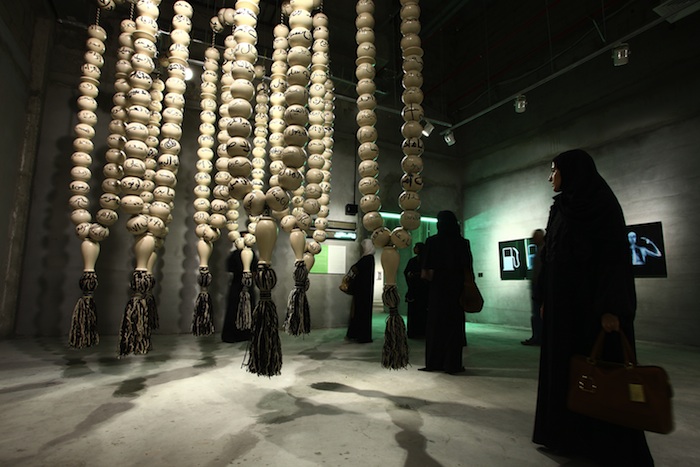 |
| Aerial shot of Abu Dhabi, UAE |
Recently, there has been an influx of art within Saudi Arabia. This is all due to the contemporary art show called "We Need to Talk". The exhibition hosted in Jeddah features more than 40 pieces, ranging from videos, sculpture, and photography by 22 artists. All artists are Saudi Arabian, while half of them are women. These artists are part of an independent arts initiative called Edge of Arabia, exhibiting world-wide over the past 3 years. But never before had they exhibited their work at home. With a new perspective on art, the exhibition was received very well by international artists, critics, and directors of prestigious museums, along with the Saudi royal family. While the exhibition was met with such high regards and interest from outside investors for future exhibitions, the city is not fully equipped for this cultural awakening. Jeddah does not have an art school or university program, no contemporary art museum, or growing contemporary art galleries within the art scene.
Click here to learn more about this.
 |
| Visitors walk through exhibition rooms. |
 |
| Ahmed Mater Evolution of a Man |
An interesting project, backed by Harvard University through the Gardner Photography Fellowship award is "Palestinian Semblance" from Miki Kratsman. Kratsman is a photo-journalist, based in Israel since 1971. His award-winning work is known for the controversial documentation of the Palestinians living in Israel. The project named "Palestinian Semblance" is a portfolio of photographs drawing on various sources of influence to document how Palestinians appear to the eye of the beholder. Within one part of the portfolio, the subjects will be presented as a targets, shot with a lens used by Israeli Defense Forces. In another part, the last piece of clothing wore by Palestinian victims will be photographed in isolation- such as in the famous Francois Aubert photograph "Emperor Maximilian's Shirt" (1867).
 |
| Miki Kratsman |
Earlier this year, the Contemporary Art Museum of Castille and Leon in Leon, Spain opened Kratsman's first solo exhibition in Spain called 'AS IT IS'. The exhibition holds over 4,000 images that document the Israeli-Palestinian conflict since 1985. Critics have claimed that it "unfolds between the vicissitudes and circumstances of the daily life of the Palestinian people, shaped by displacement, constant siege, and the systematic occupation that they have undergone for more than sixty years." It is a monumental career landmark as it shows his whole life's work within Israel, openly displaying the destruction occurring within the country's cities and the people's faith.
Click here to learn more about this.
 |
| Miki Kratsman IMG_2213 (undated) |